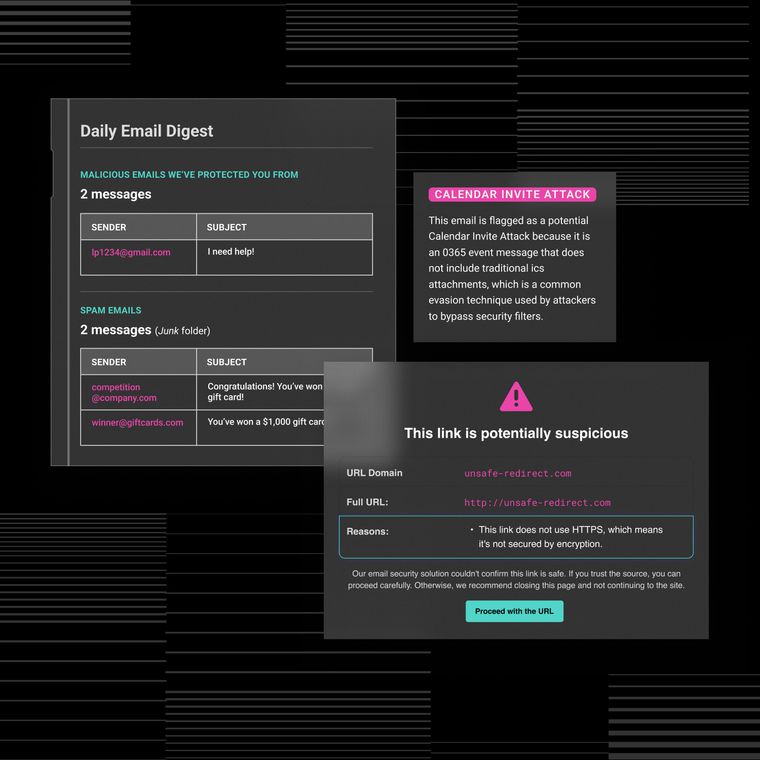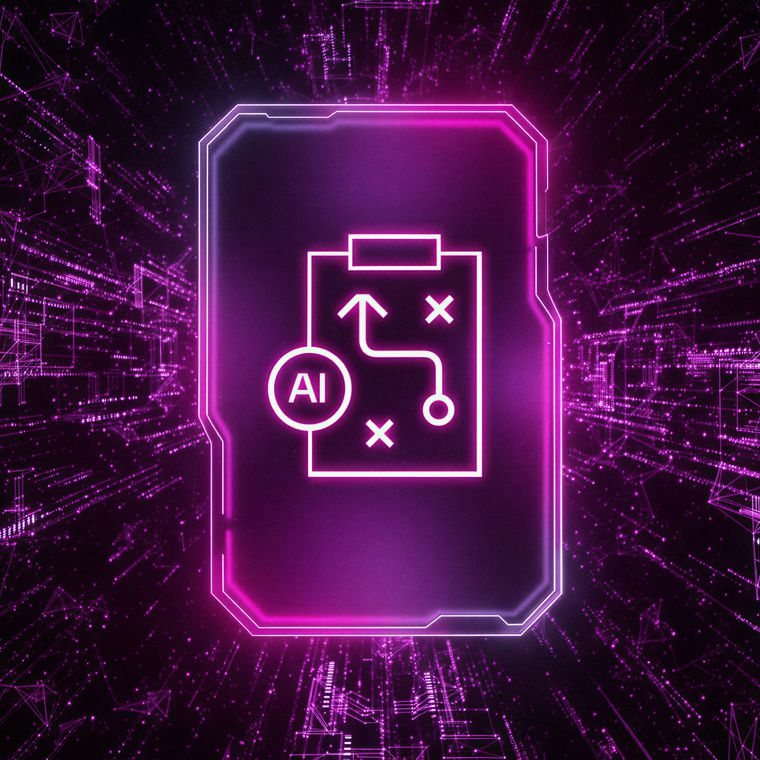SOC as a Service: A Guide to Outsourced Security Operations
Understand how SOCaaS delivers 24/7 threat detection and response without building an in-house team.
July 29, 2025
SOC as a Service (SOCaaS) offers organizations a faster, smarter way to defend against evolving cyber threats, without the massive overhead of building a 24/7 in-house security team. As cloud-first infrastructures grow and skilled talent remains scarce, internal teams are under pressure to do more with less.
SOCaaS delivers continuous threat detection and rapid incident response through a scalable subscription model powered by top-tier analysts and advanced security tools. The result? Faster deployment, seamless integration, and more time for your team to focus on what drives the business forward. This guide unpacks how to choose the right provider, boost ROI, and align outsourced operations with internal goals.
What Is SOC as a Service?
SOC as a Service (SOCaaS) is a cloud-based, subscription model that delivers a fully managed security operations center, replacing costly infrastructure and talent acquisition with instant access to expert analysts and advanced security tools.
Unlike traditional SOCs, which require months of setup and ongoing hiring, SOCaaS activates in days and scales with business needs. It includes 24/7 threat monitoring, automated incident response, integrated threat intelligence, and audit-ready reporting, all managed by the provider.
SOCaaS goes beyond the limited scope of Managed Security Service Providers (MSSPs) by overseeing the full threat lifecycle: from data collection and AI-driven detection to analyst-led investigation and coordinated response. This structure ensures no incident goes unnoticed and all activity is documented to meet compliance standards.
Offered in fully managed, co-managed, or specialized tiers, SOCaaS allows you to tailor coverage to evolving risks, delivering enterprise-grade protection while enabling internal teams to focus on strategic priorities.
Let’s understand the benefits of using SOC as a service.
Benefits of Using SOC as a Service
SOCaaS delivers enterprise-grade security operations without the overhead of building and staffing an internal security operations center, offering multiple advantages that address common security challenges. These include:
Access to Specialized Expertise
SOCaaS connects you to a team of experienced incident responders and threat hunters who are certified and highly trained. These experts bring deep knowledge of evolving attack techniques, helping to refine threat detection and speed up investigations. This access closes the cybersecurity talent gap that many organizations face.
Enterprise-Grade Technology Stack
The SOCaaS provider delivers a complete security technology stack, including SIEM, SOAR, threat intelligence, and analytics. Delivered through the cloud, this model avoids upfront capital expenses and long deployment times. You gain immediate access to advanced capabilities that scale with your business.
Continuous 24/7 Monitoring
Round-the-clock monitoring ensures threats are identified and addressed no matter when they occur, even during nights, weekends, and holidays. Real-time alerts and preconfigured response playbooks help contain incidents quickly, minimizing potential damage.
Built-in Scalability and Compliance
SOCaaS automatically adjusts resources to support business growth, such as new cloud deployments or mergers. The platform also generates detailed reports that map to standards like GDPR and HIPAA, simplifying audits and supporting compliance efforts.
Cost Efficiency and Resource Optimization
With predictable subscription pricing, SOCaaS reduces total ownership costs compared to running an in-house SOC. It eliminates expenses tied to infrastructure maintenance, employee turnover, and ongoing training. Internal teams avoid alert fatigue and can shift focus to higher-value initiatives like implementing Zero-Trust strategies or improving security architecture.
SOCaaS strengthens your organization’s resilience by combining expert support with automated protection, all while maintaining operational efficiency and reducing long-term costs.
Key Considerations When Choosing a SOCaaS Provider
Choosing the right SOCaaS partner is critical to enhancing your security posture without introducing unnecessary complexity or risk. The ideal provider becomes an extension of your internal team, offering seamless integration, proven expertise, and complete visibility. Here’s what to look for when making your decision:
Make Sure Their Expertise Aligns with Your Environment.
It’s not enough for analysts to have certifications, they need relevant experience too. Look for providers with teams that include CISSP, CISM, and GIAC-certified professionals who have handled real breaches in your industry. Ask for redacted incident reports or case studies that show how they’ve responded to threats similar to yours. Two references from organizations in your vertical can confirm whether their team truly understands your regulatory environment and threat landscape.
Check That the Technology Integrates with Your Stack
A solid SOCaaS platform should easily ingest logs from your current infrastructure and scale with future needs. Prioritize providers that offer API-first architectures and support seamless integration with cloud workloads, identity systems, and endpoint data. During a proof of concept, test ingestion from high-volume sources and watch for latency or data loss. Top-tier providers will enrich your data with behavioral analytics to reduce false positives and streamline investigations.
Insist on Measurable Slas and Transparent Operations
Your provider should be able to commit to concrete service-level agreements for detection, investigation, and response times. These metrics are essential for accountability and performance tracking. Ask to see daily summaries, transparent dashboards, and real-time threat updates. Also, clarify roles in case of a major incident, including data ownership and exit terms. The more clearly defined the communication paths, the smoother your response will be when time matters most.
Choosing a SOCaaS partner is more than a procurement exercise. It’s a long-term strategic decision. A trusted provider should enhance your security program, not complicate it. By focusing on real-world experience, integration readiness, and operational transparency, you can build a relationship that delivers lasting value and peace of mind.
How SOCaaS Enhances Incident Response
SOCaaS providers streamline every stage of the incident response process. Through real-time analytics, integrated threat intelligence, and continuous human oversight, they reduce the time it takes to detect, investigate, and remediate threats.
Threat intelligence adds crucial context to alerts.
Providers ingest intelligence from hundreds of global sources, enriching every alert with details such as IP reputation, attacker behavior patterns, and current campaign data. This enrichment eliminates time wasted on false positives and enables more precise action.Machine learning helps uncover hidden threats.
Security platforms establish baselines for normal activity and detect subtle deviations, such as privileged accounts accessing from unfamiliar locations or abnormal data transfers. This helps identify threats early in their lifecycle.Automated workflows speed up response.
High-fidelity alerts trigger playbooks that can isolate affected endpoints, block malicious domains, gather forensic data, and escalate potential fraud cases for executive-level review before attackers can proceed.Human analysts ensure accuracy and judgment.
After automation completes, trained analysts validate the incident’s impact. Only critical events are escalated to your internal team, which reduces alert fatigue while maintaining strategic control over security decisions.Collaboration tools align technical actions with business goals.
SOCaaS analysts operate as true partners, sharing dashboards, ticket queues, and post-incident reviews to ensure response efforts match your operational and compliance priorities in real time.Every incident helps improve future outcomes.
Findings from each case feed back into detection logic and response playbooks across the provider’s network. Many organizations report a significant drop in detection and response times from days to hours or even minutes, as the system learns and improves.
SOCaaS turns incident response into a continually evolving process that not only reacts faster but also strengthens defenses with every alert investigated.
Challenges and How to Overcome Them
While SOCaaS offers powerful advantages, it also introduces predictable challenges around visibility, compliance, technology, and trust. Each can be addressed with proactive planning, smart contracting, and close collaboration between your team and the provider.
Reduced Visibility and Control: Logs and workloads that sit outside your network can limit visibility for investigations. Use platform-agnostic data collectors, require real-time dashboards, and ensure your team retains authority over major response decisions.
Data Privacy and Regulatory Risks: Sharing raw event data with third-party analysts raises compliance concerns. Map data flows in advance, mask sensitive fields, work with certified providers (ISO 27001, SOC 2), and define data-residency rules in your contract.
Tool Sprawl and Alert Noise: Disconnected tools create blind spots and overwhelm analysts. Choose vendors with open APIs, demand built-in connectors, and use SOAR playbooks to unify and automate response steps.
Trust and Collaboration Gaps: Communication failures weaken partnerships. Establish shared incident channels, conduct weekly reviews, and run retrospectives to align workflows and build mutual trust.
Preparing your team with clear roles and regular simulations ensures the outsourced SOC functions as a seamless part of your security operations.
How Abnormal AI Enhances SOC as a Service
Abnormal strengthens SOCaaS by closing a critical security gap: advanced email threats. While most SOCaaS providers focus on network and endpoint telemetry, email often remains the most exploited entry point. Many still depend on outdated secure email gateways that fail to detect sophisticated attacks.
Abnormal prevents these threats from ever reaching your environment by using behavioral AI that understands typical communication patterns across Microsoft 365 and Google Workspace. It flags and remediates anomalies such as vendor impersonation or business email compromise (BEC), before they cause harm.
Integration is fast and seamless. Using native APIs, Abnormal deploys in minutes without the need to alter MX records, preserving your control over mail flow. Threats are automatically removed from inboxes and escalated to SOC analysts with full context, including behavioral insights and response recommendations. This reduces triage time and eliminates repetitive phishing and spoofing alerts.
With Abnormal, SOCaaS coverage extends beyond infrastructure to protect the most targeted attack surface or email. To see how Abnormal enhances your SOCaaS investment, request a demo.
Related Posts
Get the Latest Email Security Insights
Subscribe to our newsletter to receive updates on the latest attacks and new trends in the email threat landscape.


